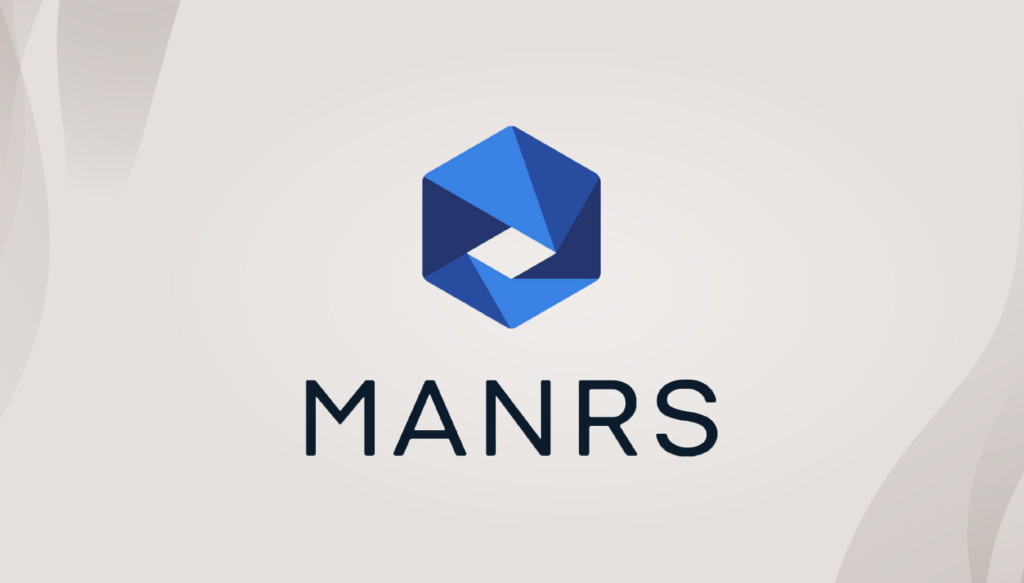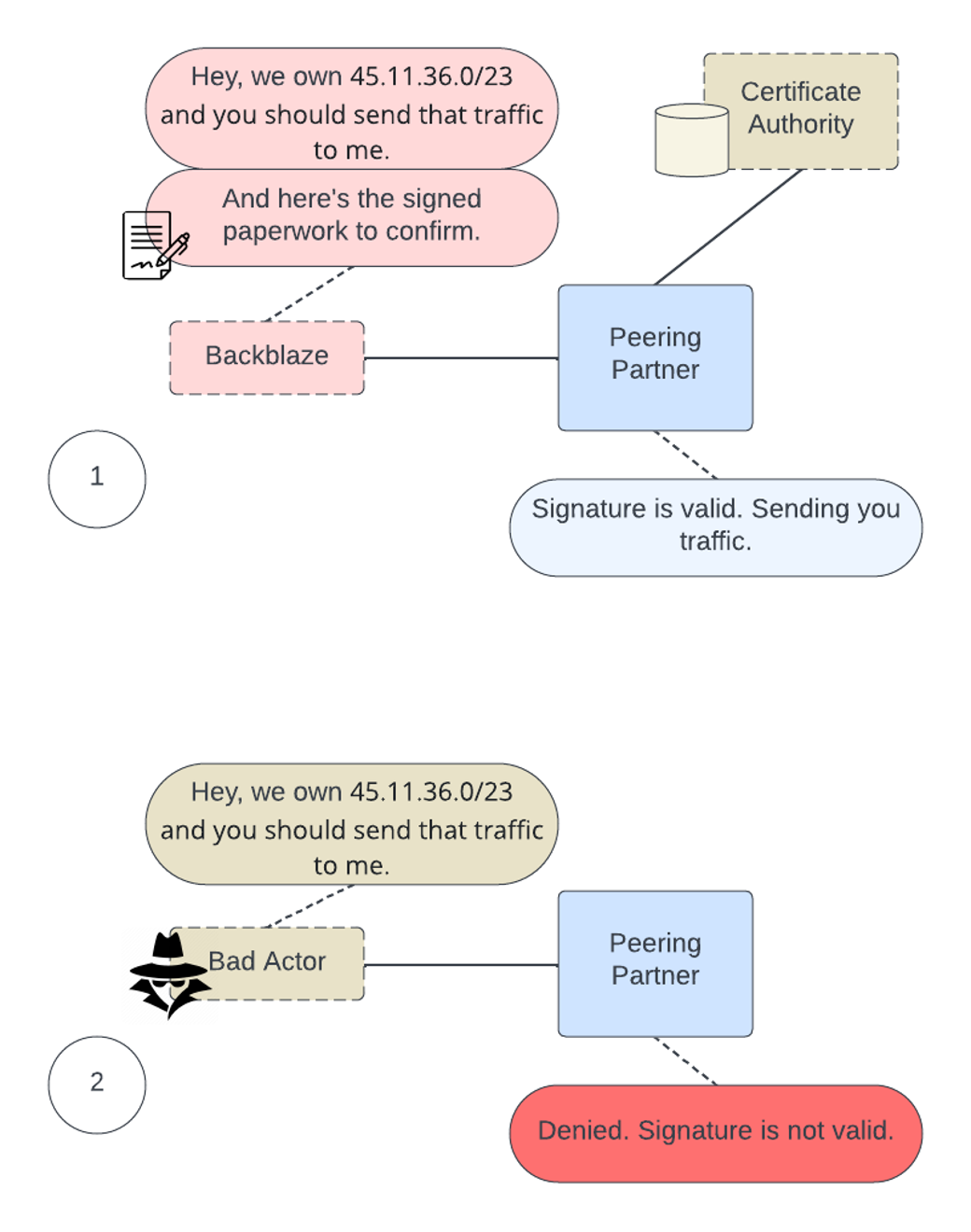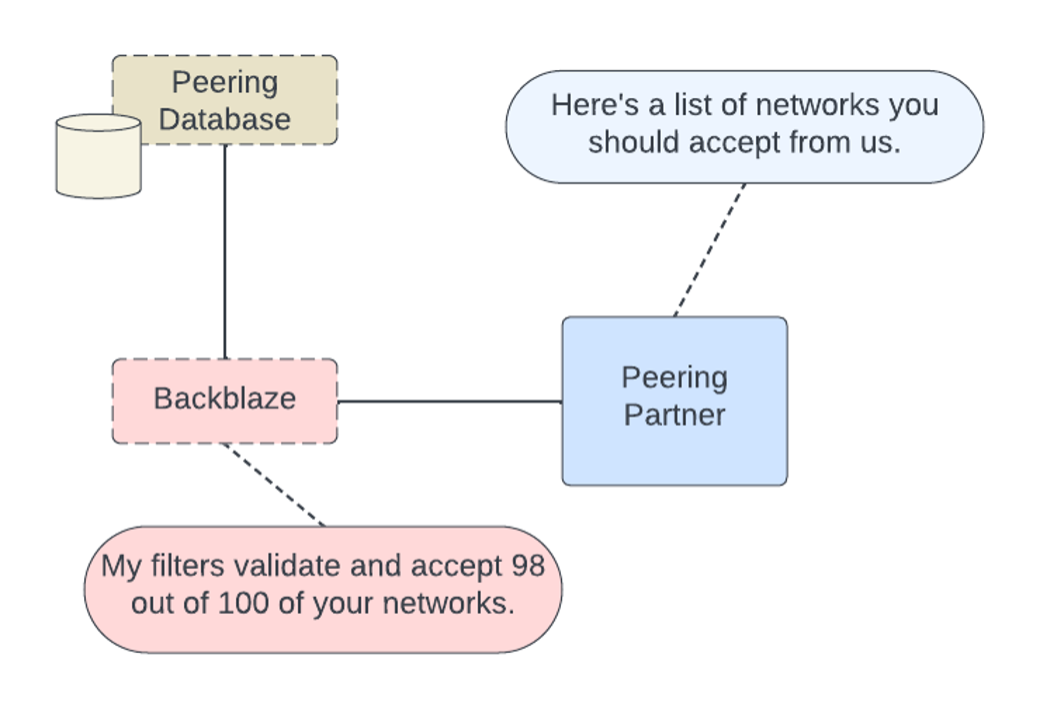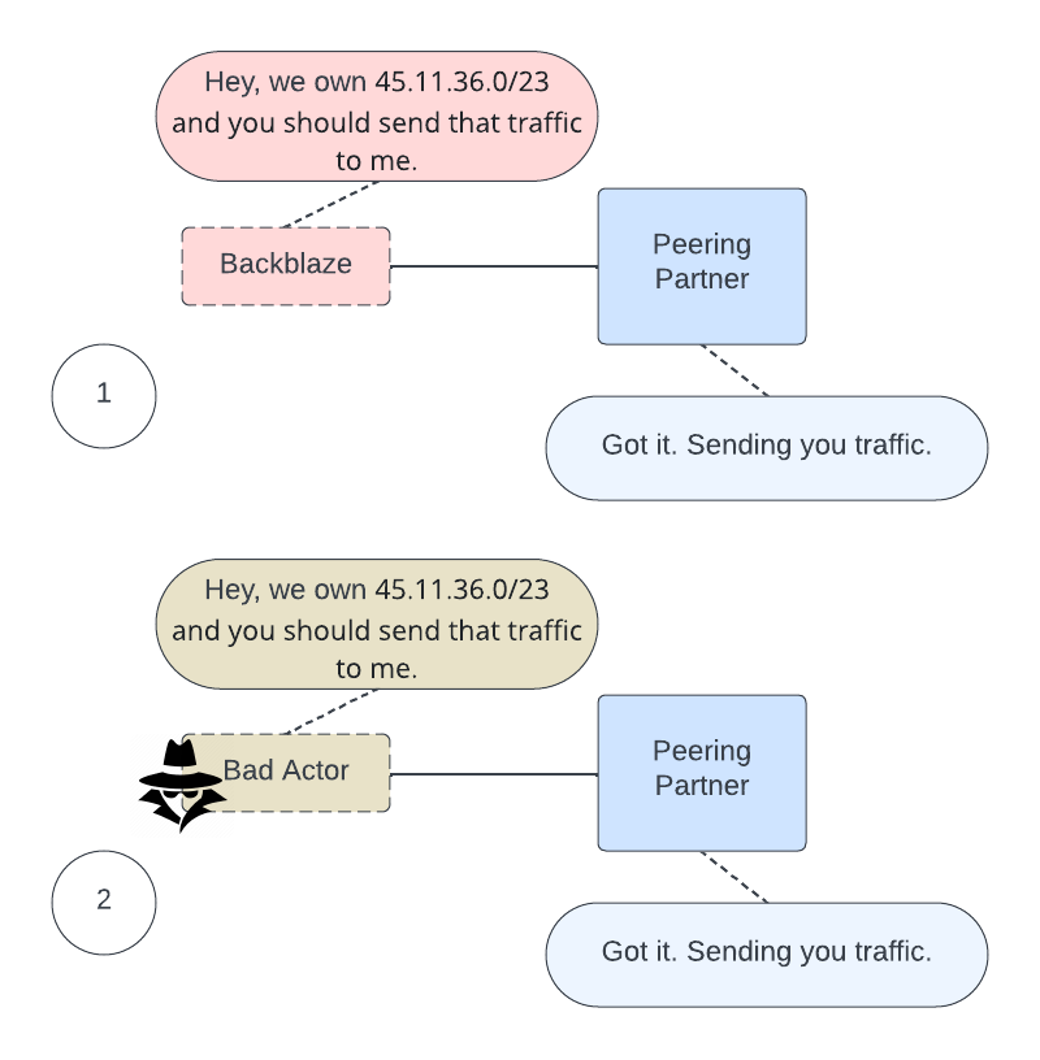
They say good manners are better than good looks. When it comes to being a good internet citizen, we have to agree. And when someone else tells you that you have good manners (or MANRS in this case), even better.
If you hold your cloud partners to a higher standard, and if you think it’s not asking too much that they make the internet a better, safer place for everyone, then you’ll be happy to know that Backblaze is now recognized as a Mutually Agreed Norms for Routing Security (MANRS) participant (aka MANRS Compliant).
What Is MANRS?
MANRS is a global initiative with over 1,095 participants that are enacting network policies and controls to help reduce the most common routing threats. At a high level, we’re setting up filters to check that network routing information we receive for peers is valid, ensuring that the networks we advertise to the greater internet are marked as owned by Backblaze, and making sure that data that gets out of our network is legitimate and can’t be spoofed.
You can view a full list of MANRS participants here.
What Our (Good) MANRS Mean For You
The biggest benefit for customers is that network traffic to and from Backblaze’s connection points where we exchange traffic with our peering partners is more secure and more trustworthy. All of the changes that we’ve implemented (which we get into below) are on our side—so, no action is necessary from Backblaze partners or users—and will be transparent for our customers. Our Network Engineering team has done the heavy lifting.
MANRS Actions
Backblaze falls under the MANRS category of CDN and Cloud Providers, and as such, we’ve implemented solutions or processes for each of the five actions stipulated by MANRS:
- Prevent propagation of incorrect routing information: Ensure that traffic we receive is coming from known networks.
- Prevent traffic of illegitimate source IP addresses: Prevent malicious traffic coming out of our network.
- Facilitate global operational communication and coordination: Keep our records with 3rd party sites like Peeringdb.com up to date as other operators use this to validate our connectivity details.
- Facilitate validation of routing information on a global scale: Digitally sign our network objects using the Resource Public Key Infrastructure (RPKI) standard.
- Encourage MANRS adoption: By telling the world, just like in this post!
Digging Deeper Into Filtering and RPKI
Let’s go over the filtering and RPKI details, since they are very valuable to ensuring the security and validity of our network traffic.
Filtering: Sorting Out the Good Networks From the Bad
One major action for MANRS compliance is to validate that the networks we receive from peers are valid. When we connect to other networks, we each tell each other about our networks in order to build a routing table that lets us know the optimal path to send traffic.
We can blindly trust what the other party is telling us, or we can reach out to an external source to validate. We’ve implemented automated internal processes to help us apply these filters to our edge routers (the devices that connect us externally to other networks).
If you’re a more visual learner, like me, here’s a quick conversational bubble diagram of what we have in place.
Every edge device that connects to an external peer now has validation steps to ensure that the networks we receive and use to send out traffic are valid. We have automated processes that periodically check and deploy for updates to any lists.
What Is RPKI?
RPKI is a public key infrastructure framework designed to secure the internet’s routing infrastructure, specifically the Border Gateway Protocol (BGP). RPKI provides a way to connect internet number resource information (such as IP addresses) to a trust anchor. In layman’s terms, RPKI allows us, as a network operator, to securely identify whether other networks that interact with ours are legitimate or malicious.
RPKI: Signing Our Paperwork
Much like going to a notary and validating a form, we can perform the same action digitally with the list of networks that we advertise to the greater internet. The RPKI framework allows us to stamp our networks as owned by us.
It also allows us to digitally sign records of our networks that we own, allowing external parties to confirm that the networks that they see from us are valid. If another party comes along and tries to claim to be us, by using RPKI our peering partner will deny using that network to send data to a false Backblaze network.
You can check the status of our RPKI signed route objects on the MANRS statistics website.
What does the process of peering and advertising networks look like without RPKI validation?
Now, with RPKI, we’ve dotted our I’s and crossed our T’s. A third party certificate holder serves as a validator for the digital certificates that we used to sign our network objects. If anyone else claims to be us, they will be marked as invalid and the peer will not accept the routing information, as you can see in the diagram below.

Mind Your MANRS
Our first value as a company is to be fair and good. It reads: “Be good. Trust is paramount. Build a good product. Charge fairly. Be open, honest, and accepting with customers and each other.” Almost sounds like Emily Post wrote it—that’s why our MANRS participation fits right in with the way we do business. We believe in an open internet, and participating in MANRS is just one way that we can contribute to a community that is working towards good for all.




